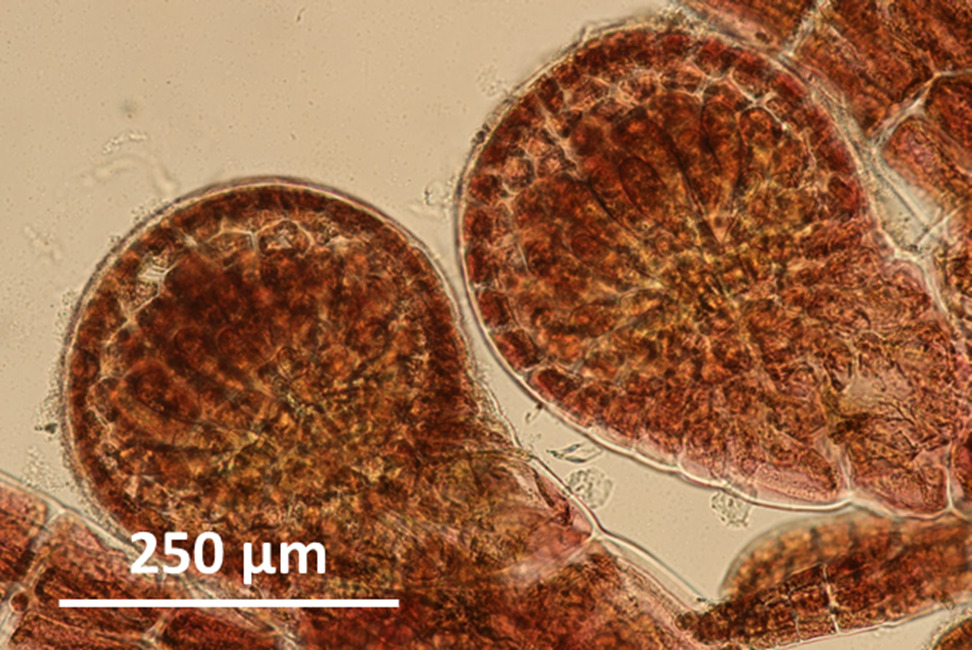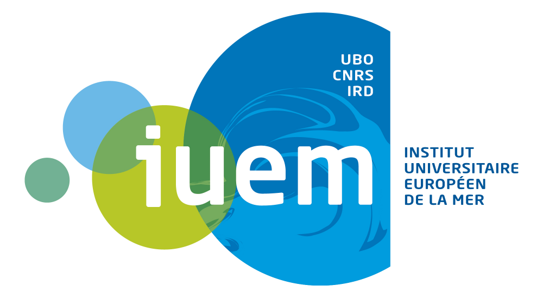Macroalgal communities associated to Eelgrass beds

What are Eelgrass beds?
Eelgrass are phanerogams (i.e. flowering plant) plants living in brackish and marine environments, building underwater beds near the surface, looking like an underwater version of earthbound meadows. In the North Atlantic, the beds are formed by two species: Zostera marina (15 to 120 cm) and Zostera noltei (5 to 45 cm). Eelgrass beds are an important coastal ecosystem because they stabilize the substratum and reduce erosion. A high diversity of animal and vegetal species is living in these environments, especially macroalgal epiphytes, which are organisms using the surface of others as a substrate; and macroalgal benthic species, which are observable with the naked eye and live on the sediment protected by eelgrass.
An endangered habitat
This complex biogenic habitat supports an abundant life, thus needing to be preserved. However, the beds are currently undergoing a global diminution of density due in part to human activities, such as intensive fishing, coastal development or nautical activities. In Bay of Brest, the composition and structure of epiphytic and benthic macroalgal communities associated with eelgrass beds has been very little described. Nevertheless, this bay abiotic parameters, characterized by a high pollution gradient due to both influences of large oceanic and river inputs, are well-studied.

Sampling method
Sampling was performed in November 2021 taken at seven different stations scattered in the bay by using quadrats. Each quadrat represents 1 replicate and 3 replicates were performed per site. A total of 135 macroalgal species were identified, mainly Rhodophytes (also known as Red algae).
For each replicate, the density of eelgrass and the number of leaves per plant were counted:
- total length of the plant,
- the width of the sheath,
- the width and length of the leaves ; to estimate the available surface for each meadow
A variation in seagrass morphology was observed between sites, with two main patterns. The first group of beds has fewer specimens with more developed leaves, the second group presents the opposite pattern, with many specimens with small leaves.
Finally, a third pattern was identified for two sites. They are both characterized by a small number of specimens and small leaves. This third pattern could describe a disequilibrium of these two sites.
Composition and structure in Bay of Brest
In every seaweed bed, among epiphytic flora, species characteristic of the Zostera genus were found. These include, among others, Rhodophysema georgei. Regarding the biomass, the most common epiphytes are Melanothamnus harveyi, Asparagopsis armata and Ceramium cimbricum . In addition, the communities associated with benthic macroalgae showed big differences between stations with high and low macroalgae biomass. Even if the majority of the variations could be explained by environmental parameters, an effect of eutrophication and anthropic activities, either human’s activities, is also observed. The sites located near the river mouth presented a large proportion of species indicative of nutrient disturbance. Therefore, the study of eelgrass-associated flora seems to be a useful tool to describe environmental and human pressures.



«The sea is an underwater museum still awaiting its visitors»
Philippe Diolé
Acknowledgements
We would like to thank Mathieu Helias for the photos and Thomas Burel for supervising the internship, as well as the scientific communication teaching team.








 Attention, vous utilisez un navigateur peu sûr !
Attention, vous utilisez un navigateur peu sûr !